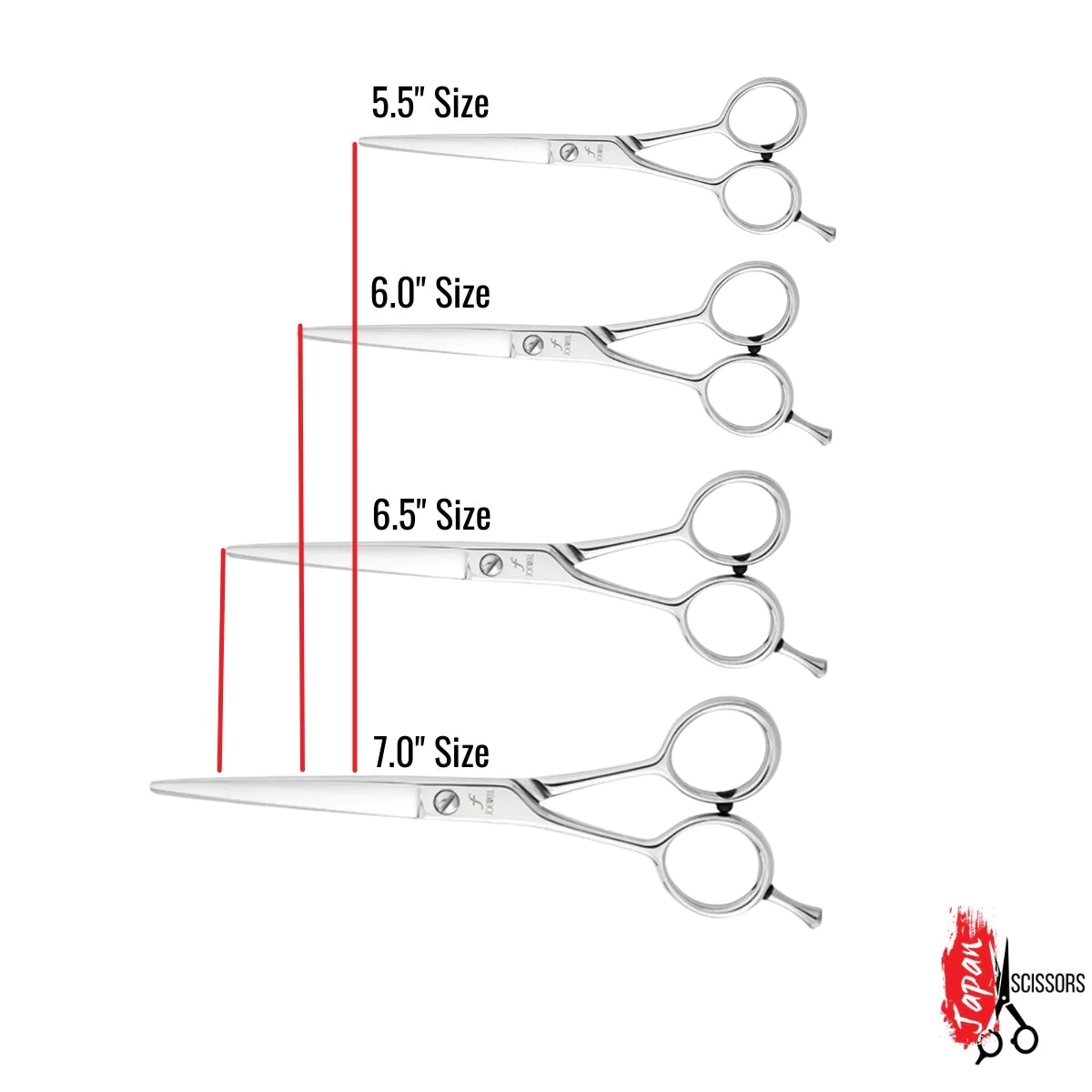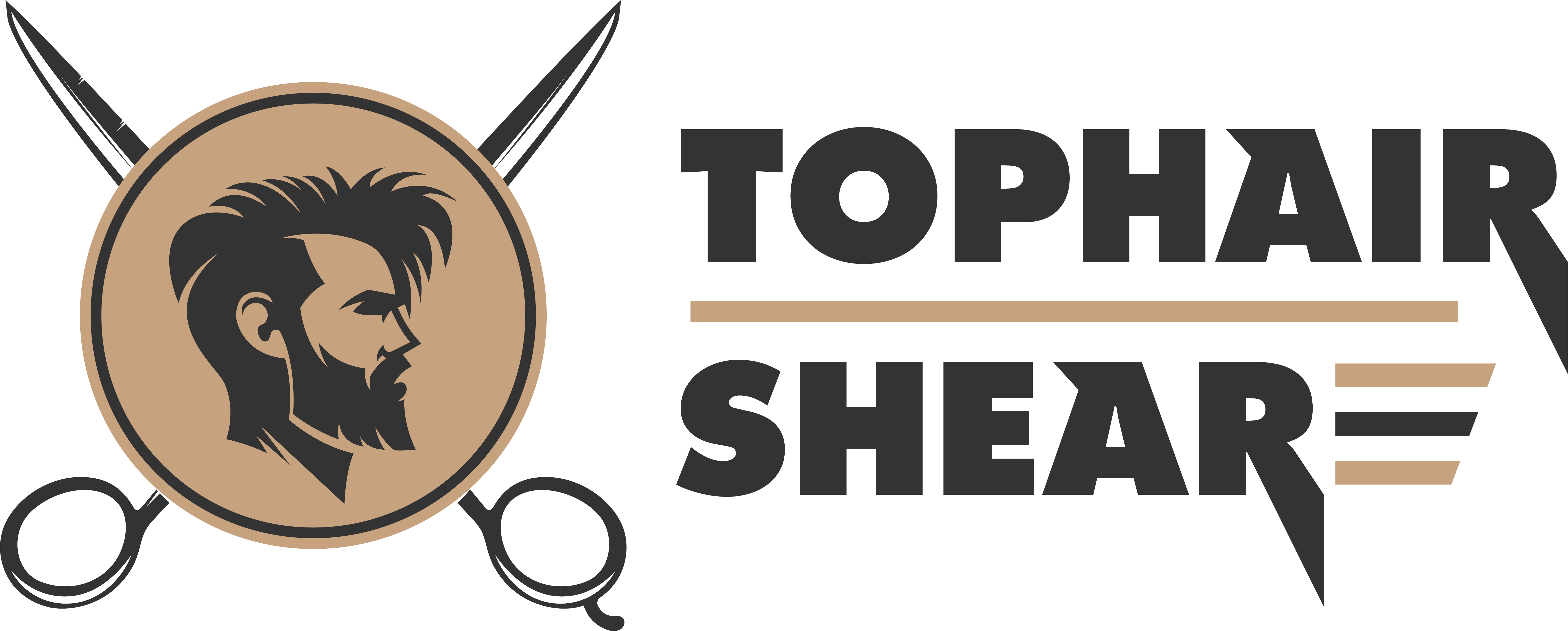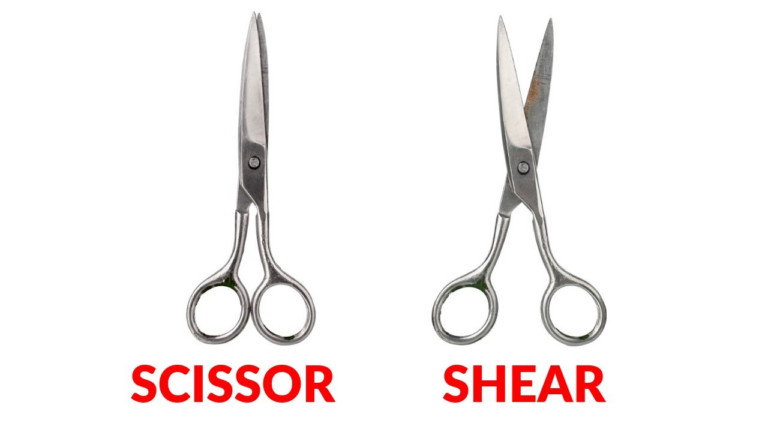Scissors vs. Shears – What’s The Difference?
When it comes to achieving the perfect haircut, choosing scissors and shears is a fundamental consideration that can significantly impact the final result. While both tools are used for cutting hair, they possess distinct characteristics that cater to different cutting techniques, hair types, and stylistic preferences. This article will talk about the top five differences between scissors and shears, shedding light on their unique attributes and helping you make informed choices for your hairstyling tasks.
Top 5 Differences Between Scissors And Shears
Size and Design

Scissors and shears differ significantly in size and design. Scissors are generally smaller and lightweight, designed to facilitate intricate and precise hair cutting. They often feature ergonomic finger rests that enhance comfort during prolonged use.
On the other hand, shears are larger and bulkier, with larger finger holes to accommodate various hand sizes and provide better control when cutting larger sections of hair.
Blade Type
The blade type is a crucial factor that sets scissors and shears apart. Scissors typically have two straight blades with micro-serrations along the cutting edge. These micro-serrations are designed to grip the hair and prevent slippage, resulting in clean and precise cuts, particularly suitable for fine hair.
Shears, however, consist of single straight and serrated blades. This dual-blade configuration is beneficial for creating textured cuts and dealing with thicker hair, as the serrated blade helps to grip and manage the hair during cutting.
Usage and Precision
Scissors and shears are tailored for different cutting techniques and levels of precision. Scissors excel in tasks that require intricate detailing and accuracy, such as trimming split ends, shaping hairlines, and creating intricate designs. Their small size and precise blades make them ideal for working with small sections of hair.
Shears, however, are better suited for cutting larger sections of hair and executing advanced cutting techniques like texturising, layering, and thinning. Their larger size and sturdy construction allow for more efficient bulk hair removal while maintaining control and precision.
Versatility
Versatility is another area where scissors and shears exhibit notable differences. Scissors are versatile tools that can be used on various hair types and styles. They offer high control and precision, making them essential for achieving intricate and detailed haircuts. Shears are more specialised tools, each designed for specific tasks.
For instance, thinning shears removes excess bulk from thick hair, while texturising shears add depth and dimension to the hair. The specialisation of shears allows hairstylists to achieve specific effects that may be challenging to accomplish with hair scissors alone.
Styling Techniques
Different cutting tools lend themselves to other hairstyling techniques. Scissors are well-suited for techniques such as point cutting, where the tips of the scissors are used to create texture and movement within the hair. They are also ideal for notching, a technique that involves removing small sections of hair to create soft edges.
Shears are commonly used for slide cutting, a method in which the shears are slid along the hair strands to create seamless layers. Additionally, shears are well-equipped for chipping, a technique that involves removing small sections of hair to add texture and movement to the overall look.
How do you distinguish between scissors and shears?
Shears, as well as scissors, can be very similar.
- Scissors have the same size of holes as fingers. These are symmetrical. The blades are typically less than six inches in length. These are suitable for the thumb and a single hand.
- Shears are available with both a small or larger finger hole. They also have a longer blade than the average shear, which is six inches. These hold the thumb and three- or four fingers.
Top best haircutting scissors and shears for professional
Related: Are Double-Sided Thinning Shears Better Than Regular Shears?
Scissors And Shears – FAQ:
What are some common hair scissor types?
Hair scissors include straight scissors, thinning scissors, texturizing scissors, offset scissors, and swivel thumb scissors.
What about hair shear varieties?
Hair shears comprise chunking shears, blending shears, curved shears, thinning shears, and swivel shears.
Are left-handed options available for both tools?
Yes, many brands offer left-handed versions of both scissors and shears to cater to left-handed hairstylists.
Which tool suits precision cutting?
For intricate detailing and precise cuts, hair scissors are the preferred choice.

